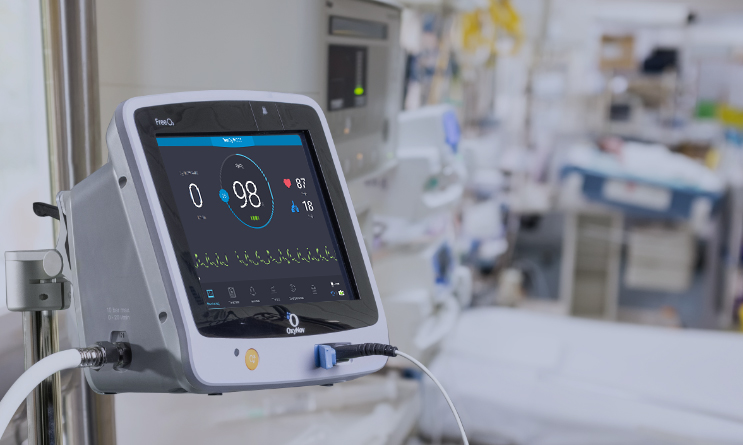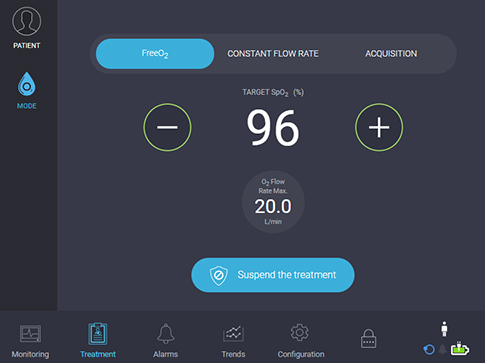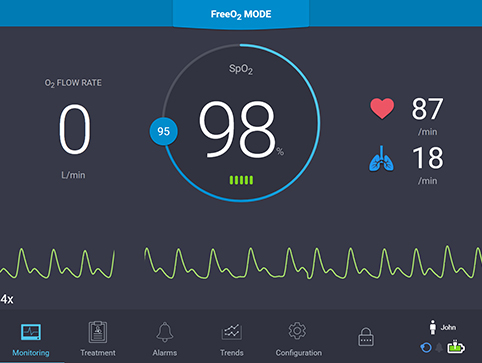The content of this site is reserved for healthcare professionals, in accordance with Law No. 2011-2012 of December 29, 2011 relating to strengthening the health safety of medicines and health products, including the implementing decree relating to the advertising.
By clicking on OK, you confirm that you are a healthcare professional.

Oxygen therapy is a first-line respiratory assistance treatment that is used on a daily basis. Millions of patients receive oxygen each day, whether they’re in the hospital or at home. Oxygen therapy is a key treatment, but it requires careful adjustments in routine clinical situations. Although it is often considered to be a risk-free treatment, many publications1 have emphasized the need to carefully adjust the amount of oxygen administered in order to avoid complications associated with hypoxemia as well as hyperoxia, which is receiving increasing levels of attention1.
Clinicians generally have a positive attitude about oxygen and are more careful to correct hypoxemia than to avoid hyperoxia. In routine clinical situations, the manual and sporadic adjustment of oxygen flow rates often results in higher than necessary levels of oxygen being administered, thus prolonging the duration of oxygen therapy.
The FreeO2 device operates on a closed-loop principle. Supplied by an oxygen source, it continuously measures the patient’s oxygen saturation (SpO2), then quickly and precisely adjusts the O2 flow rate until complete weaning.
To meet target saturation (SpO2) of your patient, the FreeO2 automatically titrates your patients’ oxygen flow and weans them as needed.
By continuously and automatically adjusting each patient’s oxygen flow, the FreeO2 accounts for individual needs and dynamics to help them remain within the target SpO2 set by the clinician.
When tested on patients hospitalized for an exacerbation of COPD, the FreeO2 made it possible to reduce the length of hospital stays by 29%2 (6.7 days compared with 9.5 days).
On the basis of the aforementioned clinical study, a medical economic study that calculated total hospital costs at 180 days found an overall 21%3 reduction in cost of care per COPD patient. The study data also points to a reduction of healthcare staff’s workload and greater adherence to clinical protocol.
When used in the emergency room to manage acute respiratory distress, the FreeO2 made it possible to treat patients more effectively (assessed based on patient evaluation and SpO2 target), limit complications related to hypoxemia and hyperoxia, wean certain patients more quickly, and avoid transferring patients to intensive care.
The FreeO2 device is suitable for all patients, from pediatric to adults, who are breathing independently and require oxygen therapy. It offers a simple, intuitive touchscreen interface that allows all healthcare staff to master the system quickly. It only takes a few taps to start, pause, or resume treatment and access the monitoring settings
The FreeO2 device uses an oximeter worn continuously by the patient. The oximeter makes it possible to monitor and record conventional cardiorespiratory parameters and, following analysis of the plethysmographic signal, to extract other physiological parameters such as the respiratory rate. Continuous recording of these parameters, which can be shown as a graph covering up to 72 hours, offers bedside access to essential information for decision-making, assessing a patient’s progress, and evaluating any necessary changes to the respiratory support being provided.

Oxygen therapy settings

Cardiorespiratory monitoring

Trend graphs
Do not hesitate to contact us for any information!